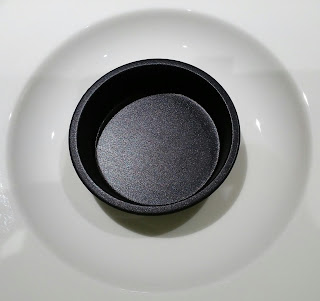… how
about slow cooking a pie filling, in this instance - steak.
Once
upon a time the kids were coming to visit. As I've said recently
their favourite meat is lamb which was already on the menu. For some
reason best known only to me I decided to serve two mains, giving a
choice. I wanted to make a pie, I think there's nothing more
comforting in the Autumn/Winter. Hey, if the worst came to the worst
and it didn't get eaten I could always freeze it.
Here's
the recipe for the filling :
Steak
Pie Filling
1kg/2.2lbs
braising steak or stewing steak, cubed
glug
of rapeseed or Canola oil
2 x
Knorr beef stock pots
2
heaped tbsp tomato paste
2
heaped tbsp small chunk Branston pickle
or 2
generous tbsp Branston sauce
Brown
the meat in a frying pan, using a drop of rapeseed oil – do this in
small batches – if you don't you'll get grey looking meat - it'll
take ages and will stew. Using a slotted spoon pop the browned meat
into the slow cooker.
Dissolve
the stock pots in the residual pan juices, then add the tomato paste
– make sure the paste is properly melted and “cooked out” - if
you don't do this you'll get a bitter taste. Add your Branston, then
add 250ml water, bring to the boil and tip over your meat. Slow cook
on low for 4 hours. If your gravy is too thin then add a little
slaked cornflour and thicken to taste.
Freeze
in amounts that suit you. For example, if you make pot pies weigh
out how much filling you'd use for the size of pot and freeze
accordingly.
Life is so much easier this way!
By the way, the
thirty minutes in the title is the time it takes to seal and brown
the batches of steak, the rest is done by magic.
Pastry Preferences
are on their way.














